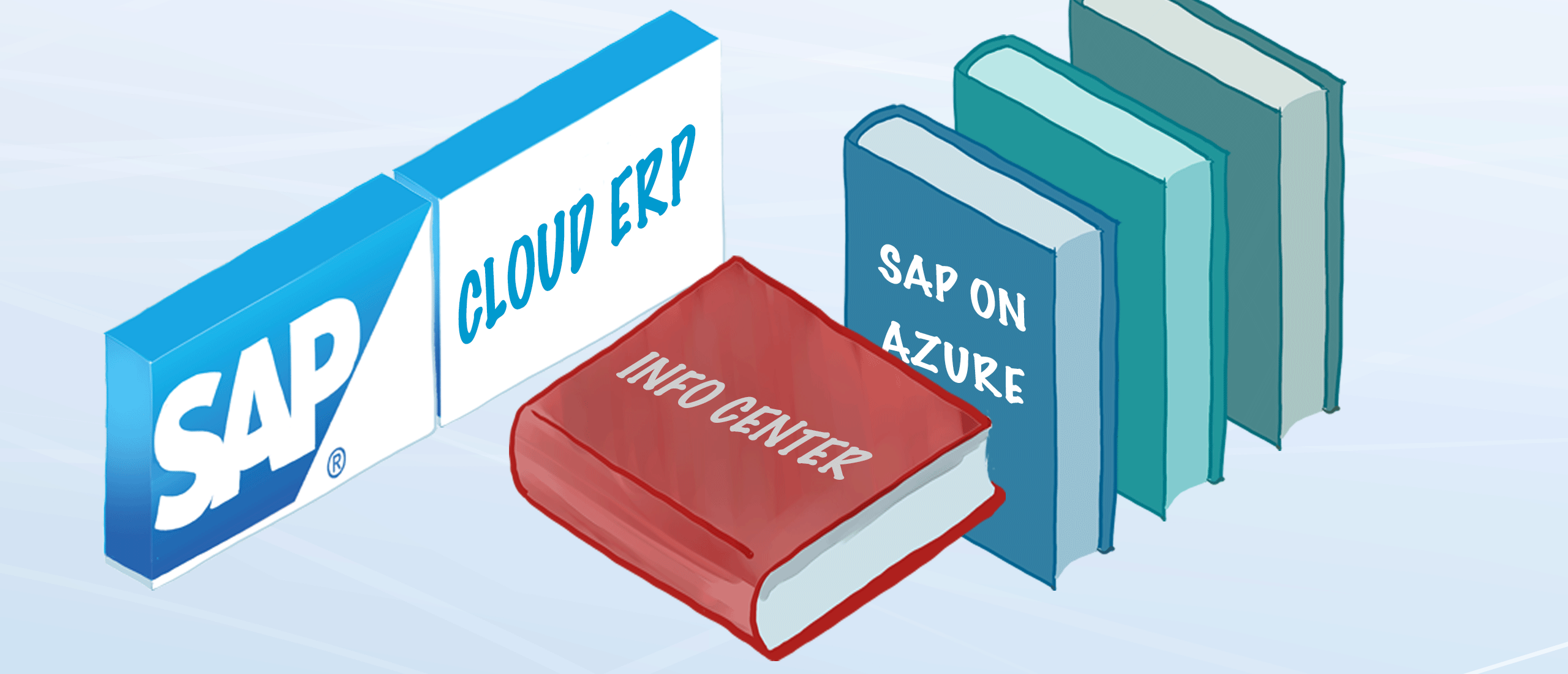
SAP on Azure | Fundaments
Microsoft Azure Cloud Platform Fundamentals
The Microsoft Azure platform offers the possibility to arrange matters "As a Service" in combination with Bring Your Own License (BYOL).
This formula for success has meant that since June 2019, Microsoft has 54 Azure regions where physical data centers are located. To get an impression of the growth, the photo below clearly shows the speed with which these data centers can grow. The photo that is placed at the top right is the photo of the data center 3 years ago.
[caption id="attachment_216855" align="aligncenter" width="599"]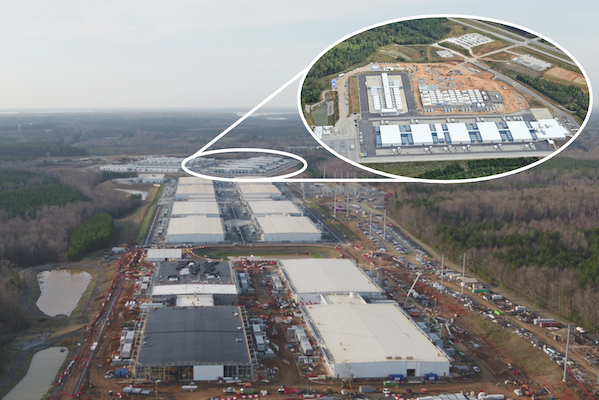 SAP on Azure Growth Data Centers[/caption]
SAP on Azure Growth Data Centers[/caption]
The network of the 54 Azure regions can be accessed both via a Microsoft Network and via the Internet Gateway (Express Routes).
Microsoft Azure Service Architecture
The Azure services are in fact subdivided into three parts:
- Data Center Infrastructure
- Infrastructure Services for Compute, Storage and Networking
- Platform Services for caching, databases, analytics, development, deployment SAP Fiori Apps, office365 integrations and many other things.
There are numerous Security Management and Hybrid Operations services offered. Thanks to this service portfolio, companies can outsource the care of complexity part and stay focussed on their business and benefit from state-of-the-art facilities.
Nothing needs to be patched anymore, availability and redundancy are also arranged. It is all a Pay-as-you-Go and fully scalable environment.
[caption id="attachment_216850" align="aligncenter" width="910"]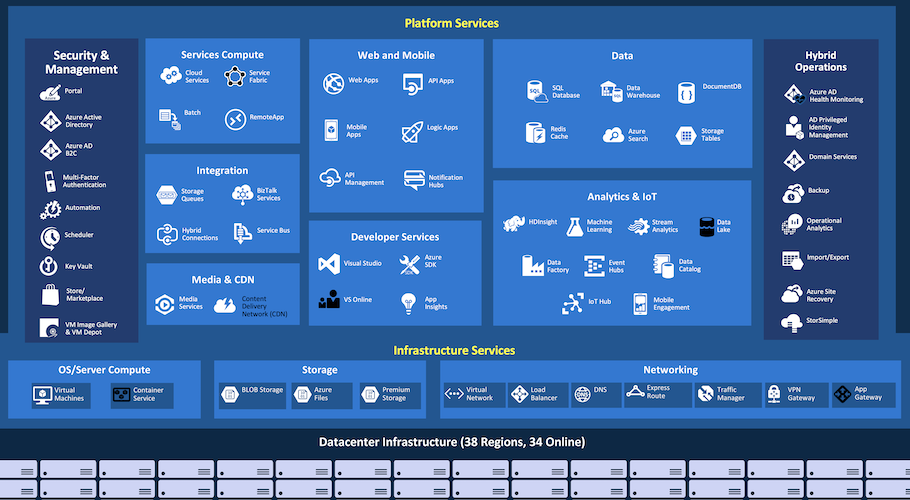 SAP on Azure Architecture[/caption]
SAP on Azure Architecture[/caption]
The Azure Active Directory gives companies the option to manage the authorization and Single-Sign-On over the entire network and applications.
Microsoft Azure availability options
Various levels are available for controlling availability, depending on the needs of the organization. The question is of course what this may cost. It is of course important to know what the costs will be if the systems fail - the so-called Cost Not - so that no systems are available within a certain time.
[caption id="attachment_216870" align="aligncenter" width="900"] SAP on Azure Service Levels[/caption]
SAP on Azure Service Levels[/caption]
- Microsoft Azure SLA options Single VM have an SLA of 99.9%.
- Availability Sets have an SLA of 99.95% - redundancy is ensured within 1 data center.
- Availability Zones have an SLA of 99.99% - here, within one data center, multiple systems are provided that are each connected to a different network, cooling and energy system.
- Region Pairs go one step further and ensure redundancy in which different regions are deployed.
Microsoft Azure Sizes
For the deployment of computer capacity for SAP HANA and/or S/4HANA applications, 2 options are available:
- the use of Virtual Machines or
- for the very large systems the option for Bare Metal.
All systems are certified to be used for SAP HANA or S/4HANA. The systems are deployed in the form of Small, Medium, Large and XLarge within the VMs. Depending on the expected consumption in the form of CPU and Internal Memory Power, the correct system (s) can be chosen.
[caption id="attachment_216871" align="aligncenter" width="900"] SAP on Azure VM Sizes[/caption]
SAP on Azure VM Sizes[/caption]
SAP on Azure VM Sizes
Microsoft Azure cost structure The cost of the computer capacity is determined by two main issues: - The size of the system - right sizing
- The time in which the system should be available - snoozing
- Pay-as-you go or reserving future capacity.
In the well-known On-Premise world - where the systems are purchased - systems are often heavily oversized to accommodate possible future peaks. These systems are often also continuously present and connected to the network and other facilities.
Right Sizing ensures that there is no overcapacity. If more capacity is required later, a system upgrade can be arranged literally in minutes.
Snoozing ensures that systems are only made active when they are really needed. As a result, payment is only made when these systems are made active. Think of training systems that may be required 4 times a year, for 2 weeks to go through the quarterly updates.
Pay-as-you-Go versus Reservations also have a major impact on the price of the infrastructure. If a system has to be present every day - think of production systems - it is more economical to reserve this for 1 or 3 years, so that savings of 40% to 70% can be realized.
[caption id="attachment_216853" align="aligncenter" width="900"]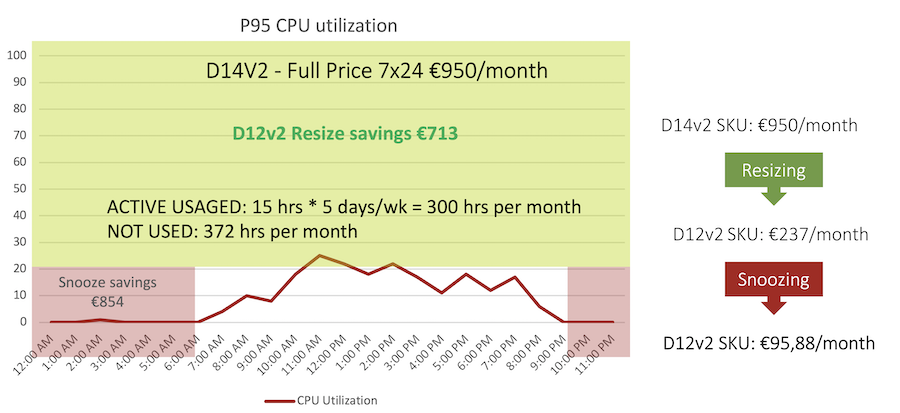 SAP on Azure Calculation Model[/caption]
SAP on Azure Calculation Model[/caption]
In the example above, the costs of a system can be reduced from €900 per month to €95 per month. The D14V2 was based on the size of the system as it was present. The D12v2 at the required capacity. In addition, the Pay-as-you-Go model was chosen, making Snoozing possible. The final costs will then be €95 per month. Below an indication of the expected savings by using systems for a longer period.
[caption id="attachment_216860" align="aligncenter" width="900"]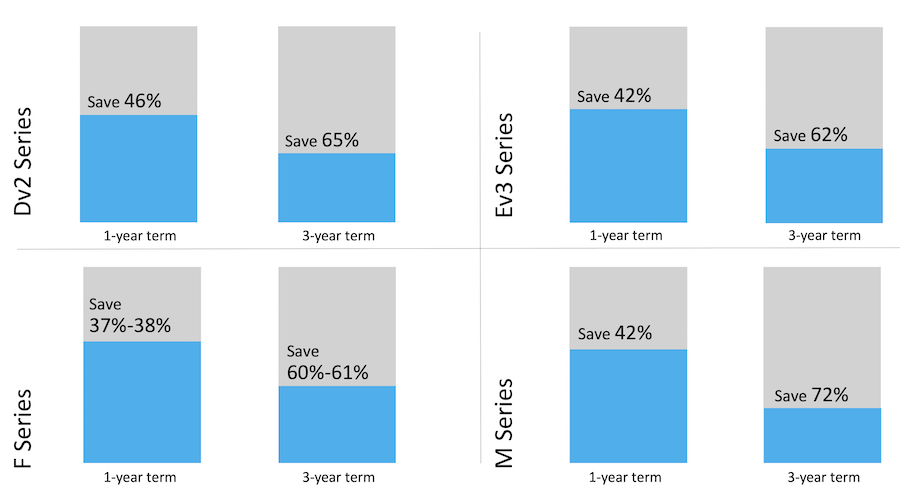 SAP on Azure Reserved Capacity[/caption]
SAP on Azure Reserved Capacity[/caption]